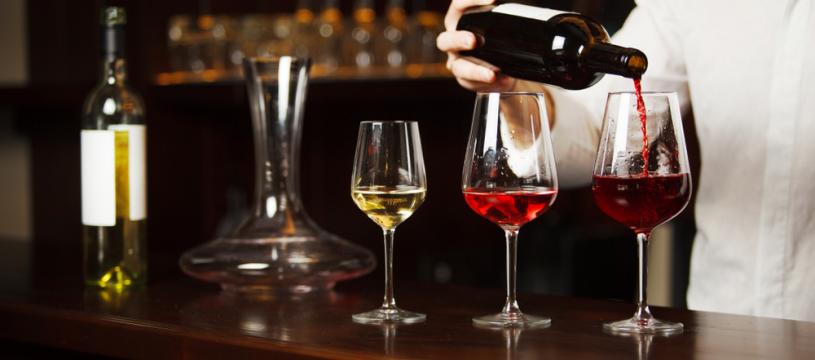
The steps of wine tasting
The tasting of a wine is carried out in three steps. First of all, it must be analyzed by the eye, then by the nose and the puck.
-
First step: visual analysis
A first step of analysis is often essential in order to identify any defects in a product.
To the eye, we can see the colour of the wine. If it is orange or ochre in colour, it is probably because your wine is oxidized.
Oxidation of a wine is due to its contact with the air, often caused by a porous cork or a problem during its vinification.
The ochre colour can occur when a wine is extremely old.
The colour of a wine gives you information about its wine and grape variety.
It is also important to focus on the clarity of the wine during this first analysis.
What is clarity?
Some wines can be cloudy at first sight. This may mean that they are not pasted or filtered.
During this visual analysis, we can sometimes observe certain deposits. This is not to be considered as a defect.
-
Second step: olfactory analysis
It is important during this step not to heat your glass very quickly, which could change its taste and smell.
To avoid this incident, you must hold your glass by the base.
During your first breath, you may notice some defects. Your wine has an apple nose in fermentation.
Another defect is easily recognizable: the taste of the cork.
Some reduction flavours are also considered as defects. To dissipate them, simply aerate your wine by turning it.
-
Third and last step: taste analysis
The palace doesn't cheat! It helps us to identify acidity, sweetness, bitterness and saltiness.
The palate is an excellent examiner on 3 senses: taste, touch and smell.
Thanks to the palate, we can analyze the quality of the tannins, the degree of alcohol, the body and its length in the mouth.
As in the previous one, don't hesitate to air your wine in your mouth this time. You'll get a better result.
You can now taste your wine as an expert! It's up to you, enjoy it!







